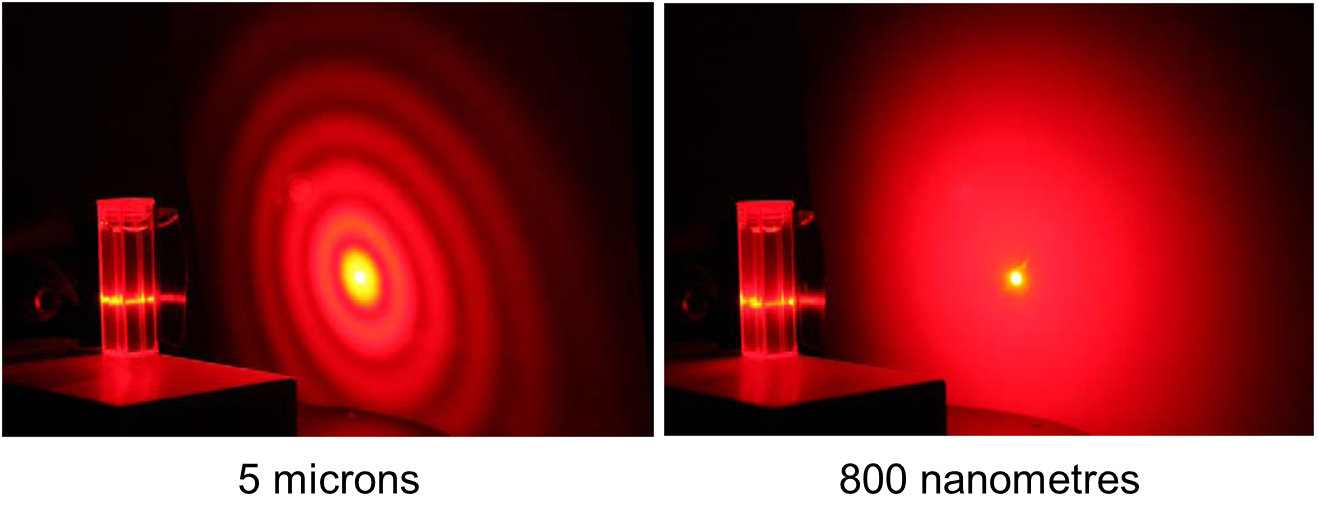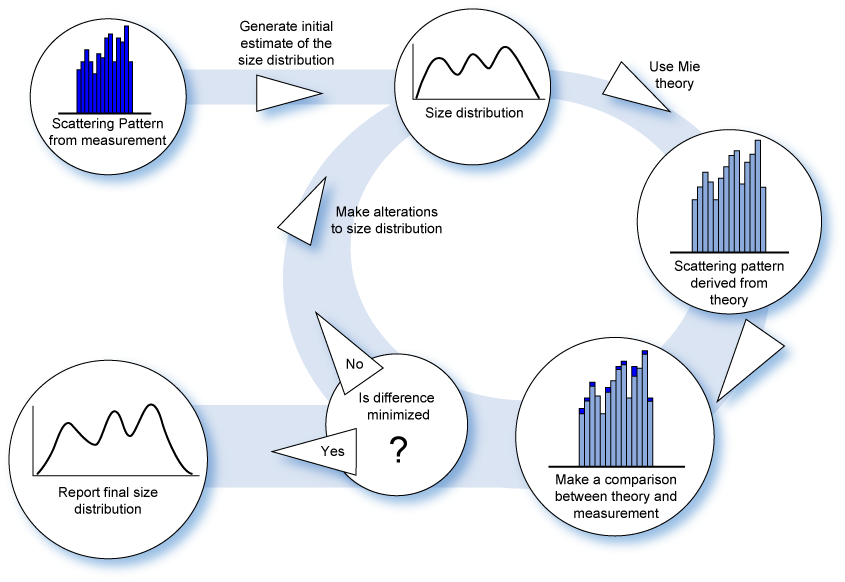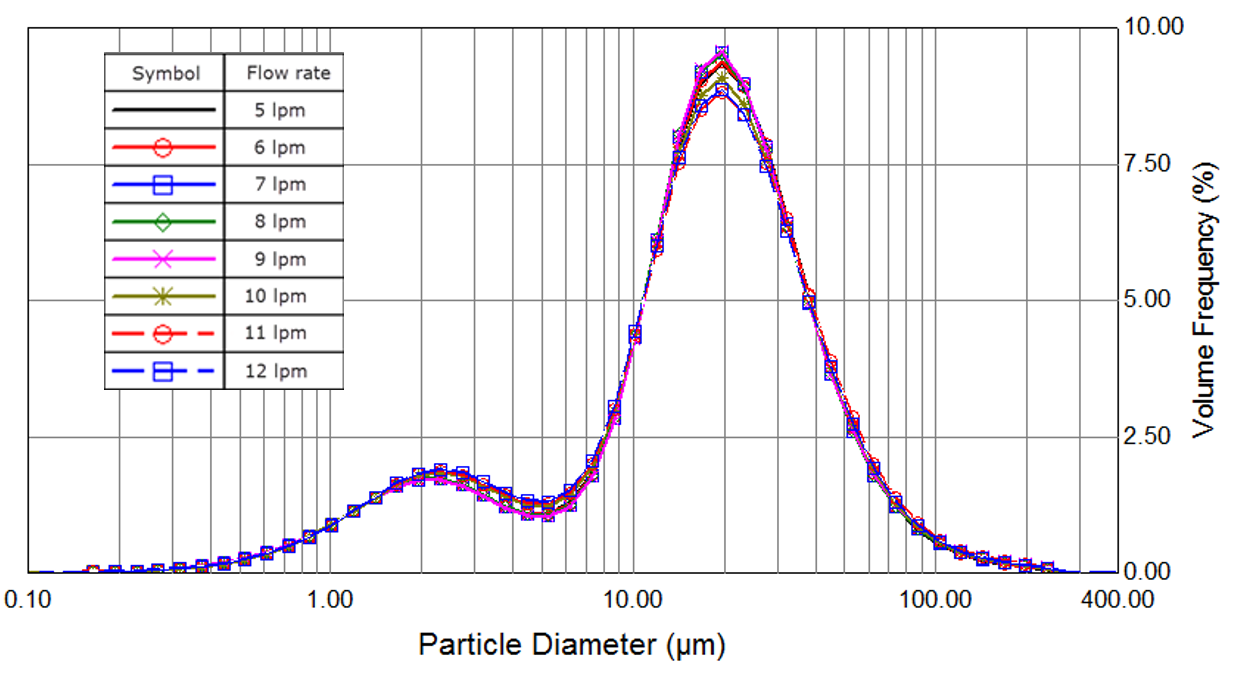International standard ISO16332 Diesel engines — Fuel filters — Method for evaluating fuel/water separation efficiency (the US equivalent being SAE J1488) is currently undergoing revision and its publication is imminent. This new version standardizes the testing of filters between manufacturers and looks at the effectiveness of the test rig and how potential droplet recirculation could affect particle size distribution (PSD). It outlines testing of filter efficiency and gives a model particle size distribution for this. Laser diffraction is specified in the standard as the only method for sizing this distribution.
This white paper examines how laser diffraction particle sizing, already an established tool in fuel filter testing, is stepping up to the challenges posed by modern fuels and the latest testing requirements. We consider the technique’s application within the context of the new methods being written for ISO16332, focusing on its implementation for measurements at high concentration, high pressure and high flow rates.
Water in diesel fuel is one of the most common causes of engine breakdown and its removal is essential for the efficient and safe operation of diesel engines, wherever they are used. Consequently, fuel filters are an integral part of a diesel engine’s configuration, serving to remove both water droplets and solid debris, protecting the engine and other components from damage. As diesel engine design has advanced, so too has the formulation of diesel fuels. Today, the increased use of additives, particularly in low sulphur fuels, can result in fine, quite stable emulsions of water droplets that are much more challenging to eliminate than larger droplets. Filter design is increasingly demanding and filter testing methods must be robust and representative of performance in the field.
International standard ISO16332 Diesel engines — Fuel filters — Method for evaluating fuel/water separation efficiency (the US equivalent being SAE J1488) is currently undergoing revision and its publication is imminent. This new version standardizes the testing of filters between manufacturers and looks at the effectiveness of the test rig and how potential droplet recirculation could affect particle size distribution (PSD). It outlines testing of filter efficiency and gives a model particle size distribution for this. Laser diffraction is specified in the standard as the only method for sizing this distribution.
This white paper examines how laser diffraction particle sizing, already an established tool in fuel filter testing, is stepping up to the challenges posed by modern fuels and the latest testing requirements. We consider the technique’s application within the context of the new methods being written for ISO16332, focusing on its implementation for measurements at high concentration, high pressure and high flow rates.
A brief review of the basics of laser diffraction analysis is appropriate here as a prelude to exploring the measurement challenges inherent in the new fuel filter testing regime and how these may be addressed. Laser diffraction is a proven particle sizing technique capable of accurately measuring materials ranging from hundreds of nanometers up to several millimeters in size. One of its many, well-established applications is in reliably sizing oil/water emulsions.
As an ensemble particle sizing technique, laser diffraction produces a result for an entire sample, as opposed to building up a size distribution from measurements of individual particles. Measurements are made by passing a dispersed sample through a collimated laser beam. Particles (or droplets) in the sample scatter the laser light over a range of angles, depending on their size. Large particles generate a high scattering intensity at relatively narrow angles to the incident beam, while smaller particles produce a lower intensity signal but at much wider angles. An array of detectors is used to record the angular dependence of the intensity of light scattered by the sample and typical scattering patterns of samples at two very different sizes are shown in Figure 1.

Figure 1: Diffraction patterns from a laser diffraction analysis, showing more diffuse scattering for smaller particles (right) (Source: Dr Kevin Powers, PERC, University of Florida[1])
Here, the diffraction pattern for a 5 µm particle (left) has an intense center and very sharp rings over a range of angles. This is because some light is scattered around the edges of the particles by diffraction, and some goes through, all later recombining to create a classic interference pattern. At smaller particle sizes (right), the scattering becomes more diffuse. Applying an appropriate theory of light scattering behavior to the detected scattering data allows calculation of the particle size distribution of the sample. The latest version of ISO13320 (the ISO standard for laser diffraction) recommends the use of Mie theory for all particles in the size range over which laser diffraction is used and, for particles below around 50 µm in size, it is considered essential.
Mie theory models the interaction of light with matter. It assumes that the particles are spherical and in a two-phase system, assumptions that are truly applicable for water droplets in oil, and requires knowledge of the refractive index of the materials involved, also a straightforward task for these systems. The theory is valid for all wavelengths of light and for all particles sizes, and predicts the dependence of scattering intensity on size. It also predicts that secondary scattering is observed for small particles, an issue that becomes increasingly important at high sample concentrations, as explored below.
Figure 2 illustrates how Mie theory is applied to the measured data to deliver the particle size distribution of the sample. Since scattering models calculate scattering patterns from a known size distribution, and not the other way around, the models are essentially used in reverse and in a cyclical manner. Scattering data are first calculated from the ’guessed’ size distribution and then compared to the measured scattering data. The process is repeated until the difference is minimized and the final size distribution can be reported.

Figure 2: The application of Mie Theory
The new test methods set out in ISO16332 present specific challenges to laser diffraction systems, and most significantly to laboratory-based analyzers. They demand the analysis of high concentration samples presented at high pressure and high flowrates (generally up to 1500 L/h), and the ability to measure changes in particle size over time. A key requirement is that the particle size distribution should not be altered by the measurement system, so there is a need to avoid both sample dilution and any possible shearing of the sample. Standard laboratory systems generally analyze dilute samples at atmospheric pressure in flow cells whose design may alter the nature of the sample. Ideally, droplet size analysis should be conducted under the same conditions that exist during a filter test. To achieve this, more industrially-focused instruments that measure online at high concentration and high pressure are more suited to this type of testing.
The suggested operating concentration for test systems in the new fuel filter standard is expected to be routinely up to 1500 ppm, with an optional 20,000 ppm. Not only are such high concentrations beyond the capabilities of laboratory instruments, their direct measurement requires a laser diffraction system that applies a multiple scattering correction. Multiple scattering occurs when light scattered by one particle hits other particles in the system before reaching the detector (Figure 3). Its occurrence causes the measured scattering to move to higher angles, which yields too fine a particle size and, without correction, results in a measurement error. Two test droplet specifications are proposed in the standard, a fine fraction with a D50 of 10 µm and D90 <30 µm, and a coarse fraction where the D50 is 150 µm and D90 < 350 µm. Fine transparent droplets present even more of a challenge from a multiple scattering perspective than coarse ones, making correction imperative.

Figure 3: Multiple scattering increases the overall angle of scattering detected
While unrelated to the issue of multiple scattering, the high concentration of the samples can also present problems in keeping measurement cells clean.
The new standard emphasizes the importance of examining particle size distribution over time, especially as parameters, such as flow rate, change. While offline laboratory analyzers could still be used within the scope of the new standard, the act of repeat sampling and the necessary dilution and circulation through a tank pose enormous risks to sample integrity. Sample representation is also called into question. Extracting a few millilitres of emulsion for offline analysis increases potential errors that may result from velocity bias encountered while sampling a moving stream, and increases the likelihood of droplets coalescing during transport to the analyzer. Online laser diffraction systems capable of direct measurement at high concentration not only avoid these risks, but they also deliver results in real-time for immediate analysis of changes and the ability to study the speed with which filtration occurs.
Analysis at the high flow rates encountered under filter test conditions introduces the risk of sample shearing, especially if there are any restrictions in the cell that create shear points, something that will reduce the droplet size and produce erroneous results. Any bends in the cell design must be avoided.
Even for those industrially rugged analyzers already well-established in fuel filter testing, such as the Spraytec and Insitec laser diffraction systems (Malvern Instruments, Malvern, UK), the introduction of the new standard has prompted further hardware developments in anticipation of its heightened demands. One output from this development is a high-flow cell specifically designed to support ISO16332 testing stipulations, which operates at flow rates from 2 to 23 L/min, and whose novel design allows measurement of water droplets in diesel at high concentration with no shearing.
An influential factor was the requirement in the standard for the sample to be unchanged by the measurement device. The resulting cell has a narrow path length of 0.5 mm that ensures linear flow with no shear points. Experimental validation data, using a typical water/fuel emulsion, are presented in Figure 4 and show that there is no decrease in the particle size; even at a flow rate of 15 L/min. Operating at such a high flow rate also has the additional advantage of reducing the chances of droplet deposition on the cell windows.
Linearity was confirmed using both latex and glass beads, and similarly, seeding coarse particles into samples produced wholly expected and consistent results, overall demonstrating measurement reliability with no bias.

Figure 4: Shear test for high-flow rate measurement cell showing no change to particle size at different flow rates
Heavy duty sapphire windows enable the cell to withstand pressures of more than 10 bar, where standard cell materials might fail. Pressure drop testing at the required flow rates, using an ISO test assembly with and without the flow cell installed, confirm that there are no issues with pressure drop likely to affect the measurement, since the flow cell caused a pressure drop of less than 3.5 kPa at the maximum flow rate of 15 L/min (Figure 5).

Figure 5: Pressure drop tests using ISO test assembly with and without flow cell installed show that the flow cell caused a pressure drop of less than 3.5 kPa at the maximum flow rate [2]
The use of online laser diffraction systems offers the best possibility of improving confidence in fuel filter testing and the development of robust test methods. New solutions are needed to fully meet the high flow and high concentration measurement requirements of the new ISO16332 Diesel engines — Fuel filters — Method for evaluating fuel/water separation efficiency standard. Online laser diffraction systems featuring test cells designed to meet the rigours of the new testing approach will help support its implementation.
[1] Information from Malvern webinar https://www.brainshark.com/malvern/vu?pi=700599336&b=1&tx=83391&c1=22&nodesktopflash=1
[2] Data courtesy of Bonavista Technologies